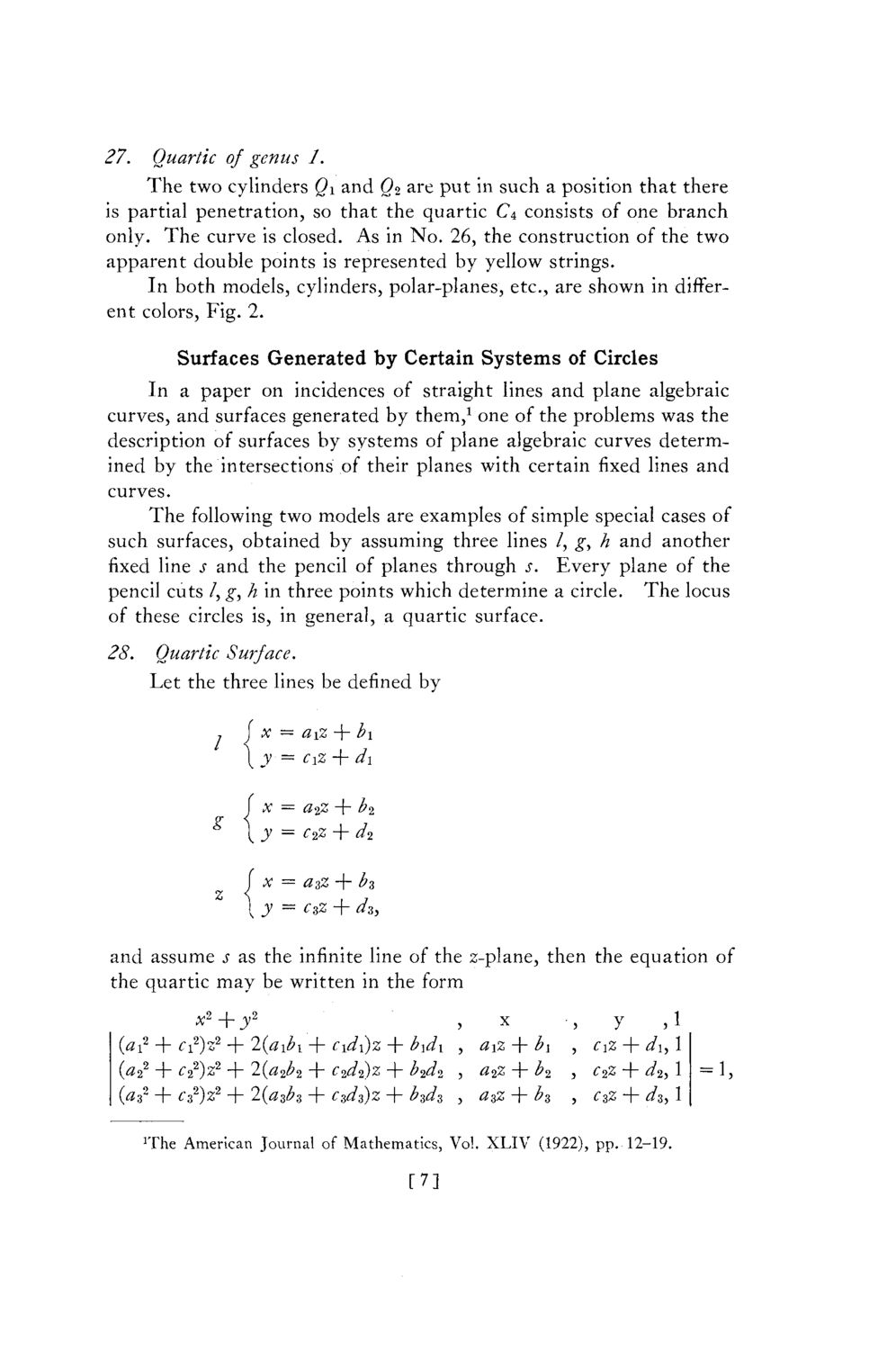| |
| |
Caption: Mathematical Models by Arnold Emch - Series 3 (1925)
This is a reduced-resolution page image for fast online browsing.

EXTRACTED TEXT FROM PAGE:
27. Quartic of genus 1. T h e two cylinders Q\ and Q2 are put in such a position that there is partial penetration, so that the quartic C4 consists of one branch only. T h e curve is closed. As in N o . 26, the construction of the two apparent double points is represented by yellow strings. In both models, cylinders, polar-planes, etc., are shown in different colors, Fig. 2. Surfaces Generated by Certain Systems of Circles In a paper on incidences of straight lines and plane algebraic curves, and surfaces generated by them,1 one of the problems was the description of surfaces by systems of plane algebraic curves determined by the intersections of their planes with certain fixed lines and curves. T h e following two models are examples of simple special cases of such surfaces, obtained by assuming three lines / g, h and another , fixed line s and the pencil of planes through s. Every plane of the pencil cuts / g, h in three points which determine a circle. The locus , of these circles is, in general, a quartic surface. 28. Quartic Surface. Let the three lines be defined by / x = ci\Z + b\ y-= c& + d\ x — a2z + b2 y = c2z + d2 x = a%z + bz \ y = csz + dz> z and assume s as the infinite line of the z-plane, then the equation of the quartic m a y be written in the form x2 + y2 O12 + ci2)z2 + 2(aibi + cid\)z + b\d\ (a22 + c22)z2 + 2(^2^2 + ^2^2)2 + b2d2 (a*2 + c32)z2 + 2(^3^3 + c3d3)z + bsds X •> y ,i aiZ + b\ , ciz + du 1 a2z + b2 , c2z + d2, 1 = ], a?,z + b3 , csz + dz, 1 'The American Journal of Mathematics, Vol. XLIV (1922), pp. 12-19. [7]
| |